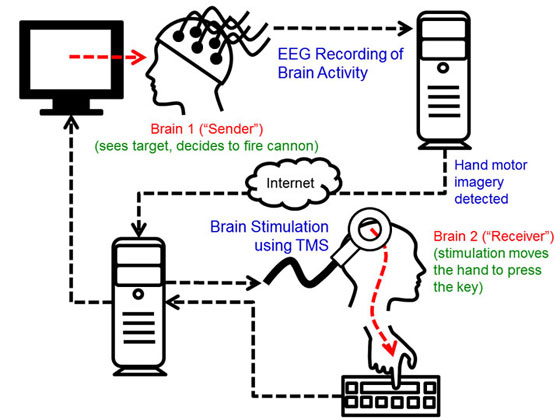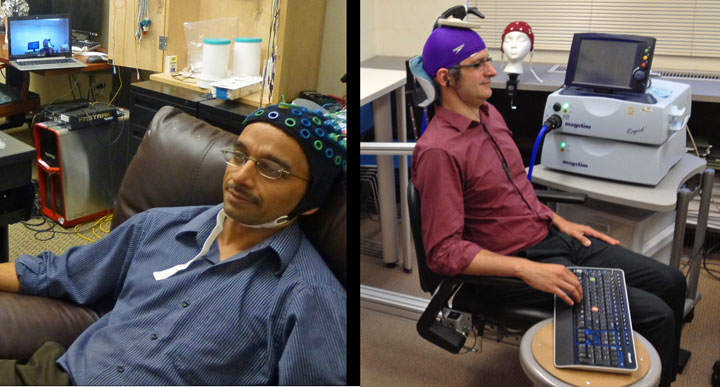TORONTO – It’s not exactly the Jedi force, but a researcher has used his mind to control the hand of another person.

University of Washington researchers conducted what they believe to be the first non-invasive human-to-human brain interface. In English, that means that the brain of one person was able to tell the brain of another what to do, without any surgery.
Researcher Rajesh Rao sent a brain signal to Adnrea Stocco, who was on the other side of the university campus, causing Stocco’s finger to move.
Rao is a professor of computer science and engineering at the university. He has been working on brain-computer interfacing for more than 10 years.

Get breaking National news
The experiment was conducted on Aug. 12. Rao wore a cap with electrodes hooked up to a machine that reads electrical activity in the brain. Stocco was in the other lab wearing a swimmer’s cap that was marked with the stimulation site. A coil was placed over his left motor cortex which controls hand movement.
Then Rao played a simple video game with his mind. At one point he imagined moving his right hand, causing a cursor to hit the fire button in the game. Almost instantaneously, Stocco, who wasn’t looking at the computer screen and was wearing noise-cancelling headphones, moved his right index finger over the space bar.
“Brain-computer interface is something people have been talking about for a long, long time,” said Chantel Prat, assistant professor in psychology at the UW’s Institute for Learning & Brain Sciences, and Stocco’s wife and research partner who helped conduct the experiment. “We plugged a brain into the most complex computer anyone has ever studied, and that is another brain.”

Though the researchers acknowledge that the experiment was done with special equipment and under ideal conditions, they believe that future uses could be for someone with disabilities to communicate their desire for food or water.
Other brain-to-brain communication has been conducted between two rats as well as a human to a rat.


Comments